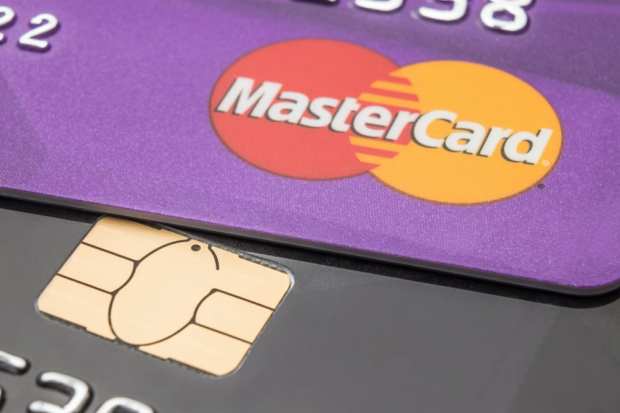Why Mastercard Bought Vyze

Second thoughts — sure, wise elders recommend them, but they represent defeat for retailers. Hesitation and deeper consideration can lead to fewer products in baskets, abandoned carts and lost sales in the world of payments and commerce.
The trick is to get that consumer past the finish line (or through the door, or over the fence, depending on the preferred cliché), and to not only make the sale, but win that shopper’s loyalty — and maybe even get them to throw a few more things into those baskets along the way.
Point-of-sale (POS) financing can help achieve those goals, according to its proponents, including Blake Rosenthal, executive vice president of acceptance solutions at Mastercard. After news broke on Tuesday morning (April 16) that the payments card network acquired POS financing provider Vyze for an undisclosed sum, she spoke with Karen Webster of PYMNTS about the thinking behind the deal, and how POS financing fits into the wider ecosystem of payments, commerce and digital consumer life.
POS Financing Growth
Overall, POS financing represents a “large and growing opportunity, driven by providing consumers more choice” when it comes to payments, she told Webster — indeed, according to an Accenture figure cited by Mastercard, the industry stands as a $1.8 trillion opportunity. “It’s a large and growing [area], but it’s not tremendously crowded now. There’s a lot of white space,” she said.
Securing a major presence in the POS financing space sooner rather than later was not the only motivating factor for Mastercard in buying Vyze. The company, Rosenthal explained, “complements the way we play in the ecosystem.” Vyze is not a lender, but more of a digital commerce and payments matchmaker, bringing together lenders and merchants, and enabling them to offer installment loans to consumers buying those merchants’ products. “If you are a merchant today, you may have connections with two or three lenders,” she said. “With Vyze, you connect with all the lenders on the platform.”
In short, that means relatively easy integration and ability to scale right out of the box for merchants that use the Vyze platform. Consumers and consumer spending, according to Rosenthal, will benefit as well. Having so many lenders available for business via a single digital platform translates into loan approval rates of “nearly 90 percent,” she said.
Vyze already works with major retailers and brands, such as Microsoft, Samsung, Home Depot, NordicTrack and many others — meaning major lending relationships are already in place, with some of that lending coming from FinTech firms.
The POS Financing Push
The world of POS financing is expanding — according to Rosenthal, the market is growing some 20 percent annually.
Walmart stands as another recent prime example of that growth. It is partnering with POS lending company Affirm to help consumers finance purchases of more than $150 (but less than $2,000). Working with Walmart offers Affirm access to an incredibly broad, diverse pool of consumers who want a different type of credit product.
POS financing is also spreading into the B2B world. As B2B commerce continues to embrace online channels, it’s a natural progress for the sector to adopt POS financing — with a similar vision of limiting cart abandonment rates and providing a better online shopping experience for corporates. However, the B2B space, as PYMNTS has documented, can present its own unique challenges when it comes to this method of consumer lending.
The Vyze Process
So, how does it work for consumers who use the Vyze platform?
A customer buying a product will, at checkout, find the POS financing option listed among other payment options, Rosenthal explained. The consumer who clicks on that option must do a bit more work — mainly, provide such personal details as name, address and Social Security number before that info is sent to the lenders taking part on the Vyze platform. Lenders that have a relationship with that particular merchant will have a specific position in the process. The first lender, for instance, can accept or reject lending to that consumer, based on the lender’s own criteria. If that lending is rejected, the lender in the second position then gets the offer, and so on and so forth.
If a loan is approved and accepted by the consumer, the relationship then forms between that consumer and the lender (and this is a non-credit card transaction, by the way). That’s not to say the merchant is out of the loop entirely, though, and plays no role in the lending or the terms of a loan.
According to Rosenthal, merchants can and do subsidize the costs of some loans to spark more consumer spending, with some installment loans even offering zero-percent interest. That can lead to less risk of cart abandonment and a higher-priced mix of products in consumer shopping carts, she said.
There remains more than a few aspects of the Vyze-Mastercard deal to work out — chief among them is how to brand the lending and loan offers, given the multiple players involved. However, Rosenthal said there is ample room for growth and what amounts to experimentation, especially when it comes to acquirers. In addition, there are “probably tons of synergies with the products we have.”
No matter what, the overall prospects for POS financing seem pretty bright at this point. After all, who wants to lose a sale because of consumer hesitation about how to pay for it?
